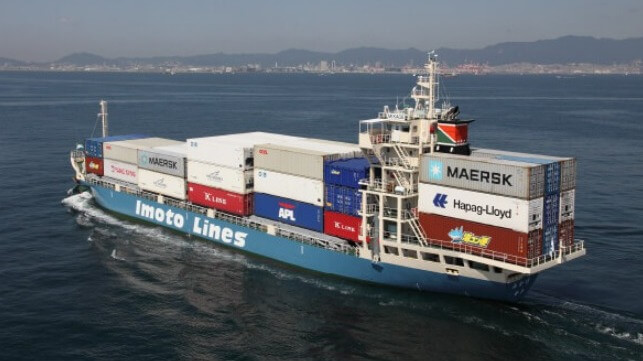Study uncovers neural mechanisms underlying foraging behavior in freely moving animals
RICE UNIVERSITY
IMAGE:
VALENTIN DRAGOI PROFESSOR OF ELECTRICAL AND COMPUTER ENGINEERING AT RICE UNIVERSITY, PROFESSOR OF NEUROSCIENCE AT WEILL CORNELL MEDICAL COLLEGE AND SCIENTIFIC DIRECTOR OF THE METHODIST/RICE CENTER FOR NEURAL SYSTEMS RESTORATION.
CREDIT: (PHOTO BY JEFF FITLOW/RICE UNIVERSITY)
HOUSTON – (April 19, 2024) – While foraging, animals including humans and monkeys are continuously making decisions about where to search for food and when to move among possible sources of sustenance.
“Foraging behavior is something we perform daily when we go to the grocery store to pick up food, and we make choices based on the degree of reward each choice provides. It’s a classical problem common to every species on the planet,” said Valentin Dragoi, professor of electrical and computer engineering at Rice, professor of neuroscience at Weill Cornell Medical College and scientific director of the Methodist/Rice Center for Neural Systems Restoration.
In a paper published in Nature Neuroscience, Dragoi and collaborators investigate the brain processes involved in searching for food.
“In this study, we describe the use of a new integrated wireless system for recording brain activity in the frontal areas of their brain and for oculomotor and behavioral tracking. We examine in real time how this ubiquitous task of foraging unfolds, which is something we naturally perform every day,” Dragoi said.
Macaques are a genus of monkeys native to Asia, North Africa and Southern Europe (Gibraltar). They most often eat fruit, seeds and other plant-based food. “We study macaques,” Dragoi said, “because foraging is a natural behavior and the macaque brain is quite similar to the human brain in terms of organization and function.”
Until now, it was difficult to examine the neural basis of foraging in naturalistic environments because previous approaches relied on restrained animals performing trial-based foraging tasks. Dragoi and his research partners allowed unrestrained macaques to freely interact with reward options while wirelessly recording neural activity in their prefrontal cortex.
“Animals decided when and where to forage based on whether their predictions of reward were fulfilled or violated. The predictions were not based exclusively on a history of reward delivery, but also on the understanding that waiting longer improves the chance of reward,” Dragoi said.
The results indicate that foraging strategies are based on a cortical model of reward dynamics as animals freely explore their environment.
“We learned that we can predict choices even in complex situations by simply reading out the responses of dozens of neurons in the frontal lobe. This can potentially move in the direction of prosthetic devices to influence or bias choice, even noninvasively. More fundamentally, it allows us to understand how the brain works when engaged in this natural behavior,” Dragoi said.
Next, the Dragoi lab will combine foraging in a social context and record from two animals simultaneously while they cooperate to seek food as a reward. This is a daunting technical challenge but Dragoi believes he and his research partners are close to achieving such goals. This may enable a solution to the challenge of cortical implants to assist patients with brain dysfunction and enable their behavioral decisions.
The lead author of the article is Neda Shahidi, a former Ph.D. student in Dragoi’s lab, currently group leader at Georg-Elias-Müller-Institute for Psychology, Georg August-Universität, Göttingen. The co-authors, in addition to Dragoi, are Melissa Franch, postdoctoral research fellow in neuroscience, Baylor College of Medicine; Arun Parajuli, data scientist at the University of Texas Health Science Center, Houston; Paul Schrater, professor of computer science and engineering at the University of Minnesota; Anthony Wright, professor of neurobiology and anatomy, McGovern Medical School, Houston; Assistant Professor, Electrical and Computer Engineering; Assistant Professor of Neuroscience, Baylor College of Medicine; Xaq Pitkow, assistant professor of ECE at Rice and assistant professor of neuroscience at Baylor College of Medicine.
The research was supported in part by the National Institutes of Health (5U01NS094368), The Robert and Janice McNair Foundation and DFG (CRC1528). The content in this press release is solely the responsibility of the authors and does not necessarily represent the official views of the NIH and other listed funders.
⎯ by Patrick Kurp, science writer at the Rice University George R. Brown School of Engineering
-30-
This news release can be found online at news.rice.edu.
Follow Rice News and Media Relations via Twitter @RiceUNews.
Peer-reviewed paper:
Population coding of strategic variables during foraging in freely moving macaques | Nature Neuroscience | DOI: 10.1038/s41593-024-01575-w
Authors: Neda Shahidi, Melissa Franch, Arun Parajuli, Paul Schrater, Anthony Wright, Xaq Pitkow and Valentin Dragoi
https://www.nature.com/articles/s41593-024-01575-w
Image downloads:
https://news-network.rice.edu/news/files/2024/04/240208_Dragoi_Fitlow_019-457ce01a4c12c800.jpg
CAPTION: Valentin Dragoi professor of electrical and computer engineering at Rice University, professor of neuroscience at Weill Cornell Medical College and scientific director of the Methodist/Rice Center for Neural Systems Restoration. (Photo by Jeff Fitlow/Rice University)
About Rice:
Located on a 300-acre forested campus in Houston, Rice University is consistently ranked among the nation’s top 20 universities by U.S. News & World Report. Rice has highly respected schools of architecture, business, continuing studies, engineering, humanities, music, natural sciences and social sciences and is home to the Baker Institute for Public Policy. With 4,574 undergraduates and 3,982 graduate students, Rice’s undergraduate student-to-faculty ratio is just under 6-to-1. Its residential college system builds close-knit communities and lifelong friendships, just one reason why Rice is ranked No. 1 for lots of race/class interaction, No. 2 for best-run colleges and No. 12 for quality of life by the Princeton Review. Rice is also rated as a best value among private universities by Kiplinger’s Personal Finance.
JOURNAL
Nature Neuroscience
METHOD OF RESEARCH
Experimental study
SUBJECT OF RESEARCH
Animals
ARTICLE TITLE
Population coding of strategic variables during foraging in freely moving macaques

